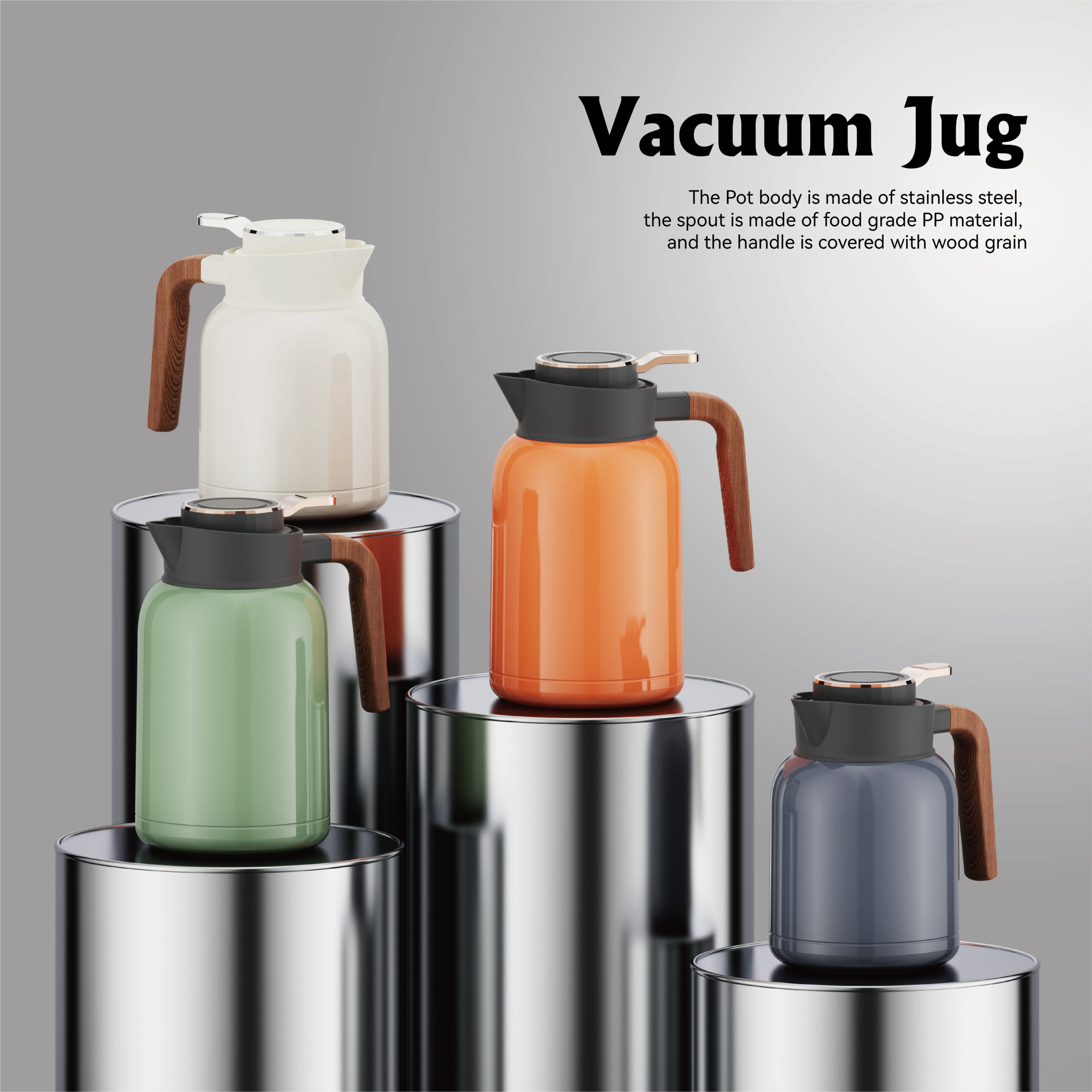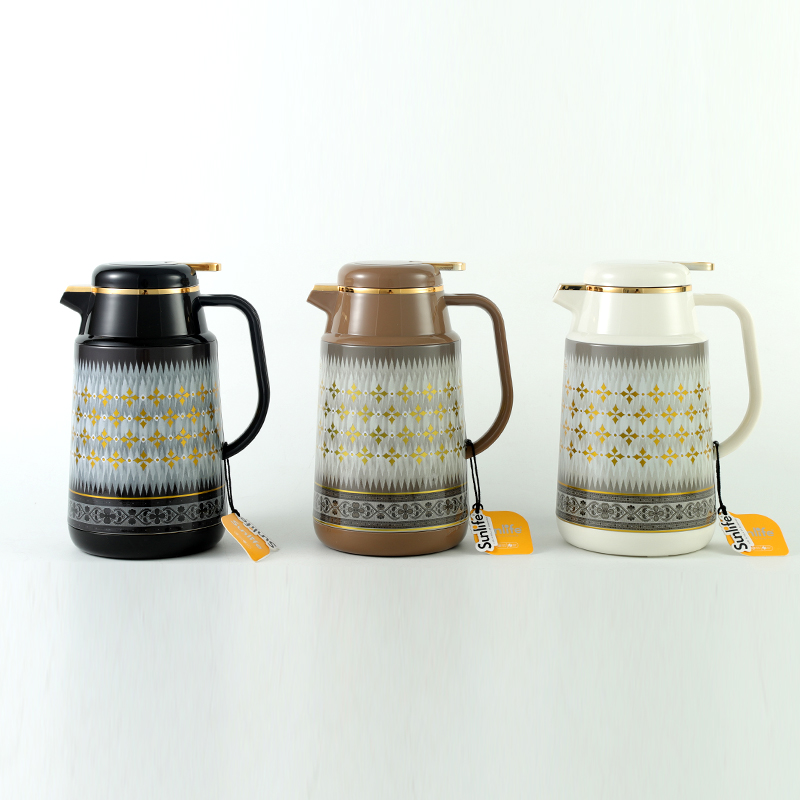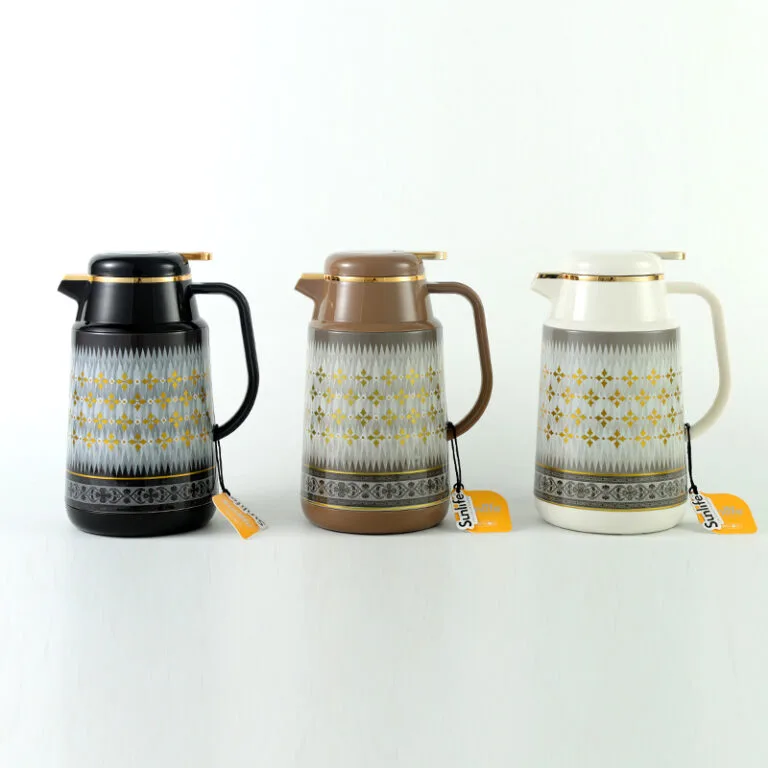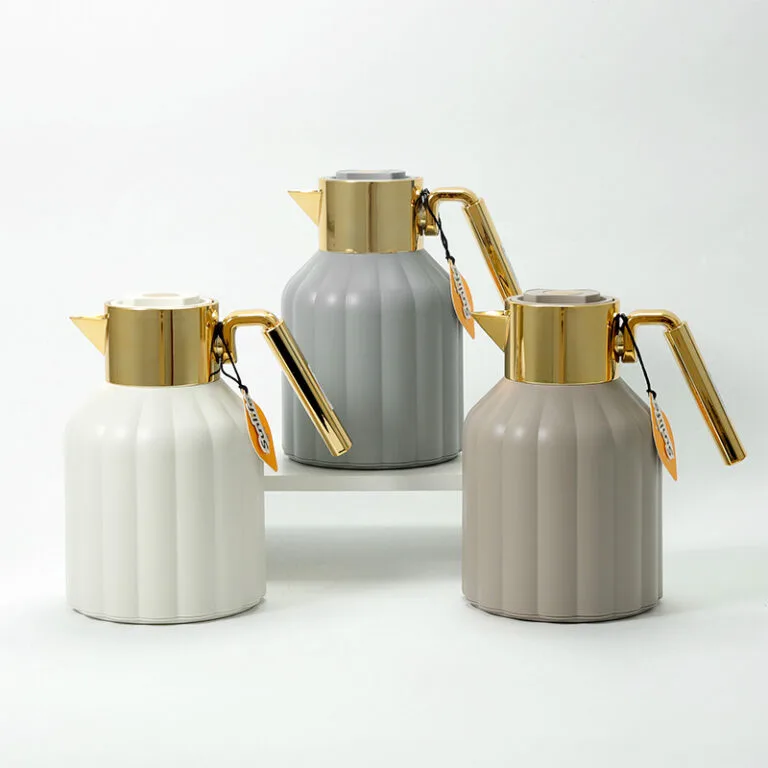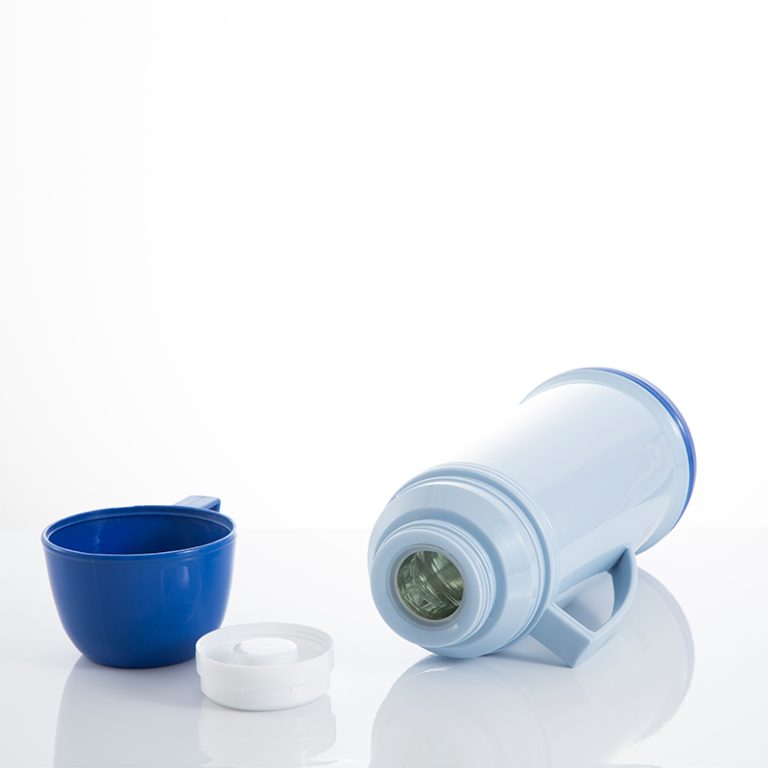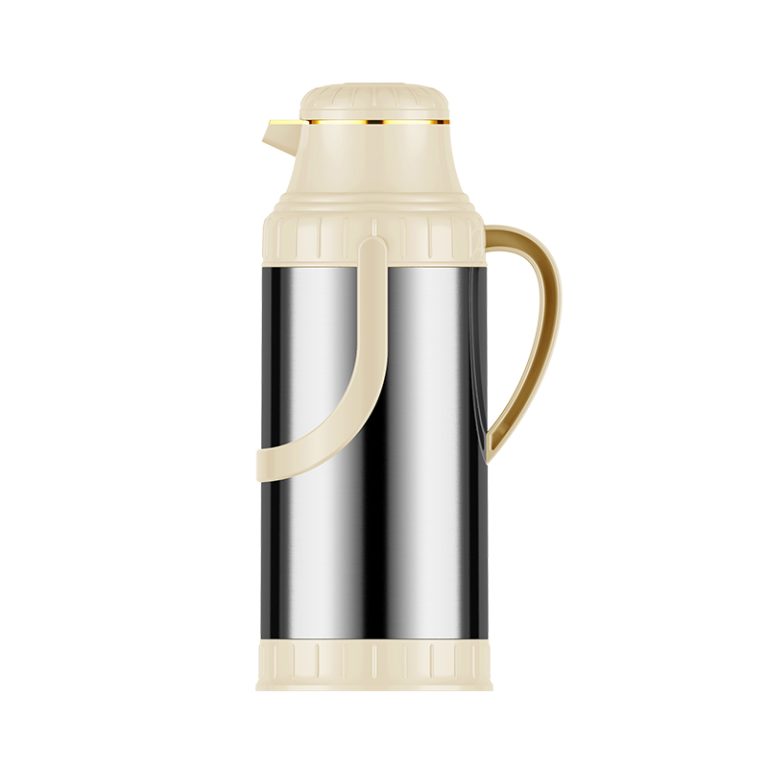Hey, coffee lovers and kitchen gadget fans, have you ever wondered why that sturdy iron body coffee pot on your countertop feels like it’s from another era, yet somehow keeps your brew piping hot for hours? Well, let’s dive in. Iron body coffee pots aren’t just relics from grandma’s kitchen anymore. They’re evolving with some cool tweaks and tech that make them better than ever. In this post, we’ll chat about the latest innovations in their design, pulling from what’s happening in the industry right now. Whether you’re a home barista or someone stocking up for a cafe, stick around – you might find something that changes how you pour your next cup.
The Basics: What Makes an Iron Body Coffee Pot Tick?
First off, let’s get on the same page about what we’re talking about. An iron body coffee pot, sometimes called a metal body coffee pot with a glass liner, is that tough, no-nonsense vessel designed to keep coffee hot without electricity. The outer shell is usually iron or a sturdy metal alloy, and inside, there’s often a glass vacuum liner that traps heat like a thermos.
Traditionally, these pots were simple: pour in the coffee, seal it up, and hope it stays warm. But designs have come a long way. Think about it – back in the day, you’d deal with leaks, uneven pouring, or pots that cooled off too quick. Now? Manufacturers are fixing those headaches with smarter engineering. For instance, many modern versions use double-walled construction, but with iron, it’s all about balancing durability and heat retention.
I remember grabbing one of these at a flea market years ago; it was heavy as heck and leaked a bit when tilted wrong. Fast forward to today, and the focus is on user-friendly features. We’re seeing pots that pour smoothly without drips, thanks to redesigned spouts. It’s not rocket science, but it sure makes mornings less messy.
Key Innovations in Materials and Build
Alright, let’s get into the meat of it: materials. Iron body coffee pots have always been tough, but new tech is making them lighter and more resistant to rust. Picture this – instead of plain old iron that scratches and corrodes over time, companies are mixing in alloys with stainless steel elements. This isn’t just for show; it cuts down on weight by about 20-30% without losing that solid feel.
Take the glass liner inside. Older models used basic borosilicate glass, which is fine but prone to breaking if you drop it. Now, some designs incorporate tempered glass or even shatter-resistant composites. One cool advancement is the vacuum-sealed liner with multi-layer coatings. These coatings reflect heat back in, keeping coffee hot for up to 12 hours. Yeah, that’s a game-changer for long office days or camping trips.
And speaking of coatings, anti-bacterial treatments are popping up. Imagine a pot where the inner surface fights off mold and bacteria naturally. No more funky smells after a week of use. It’s subtle, but it adds peace of mind, especially if you’re sharing the pot at family gatherings.
Here’s a quick breakdown in a table to compare old-school vs. modern designs:
| Feature | Traditional Design | Modern Innovations |
| Outer Material | Plain iron, heavy and rust-prone | Alloyed iron with anti-corrosion coatings, lighter by 20% |
| Inner Liner | Basic glass, breaks easily | Tempered or composite glass, vacuum-sealed for better insulation |
| Weight | 2-3 kg for a 1L pot | 1.5-2 kg, easier to handle |
| Heat Retention | 4-6 hours | 12-24 hours with reflective layers |
Not bad, right? These changes come from real-world testing. Factories run simulations where pots get dropped, heated, and cooled repeatedly to mimic daily abuse.
Tech Upgrades in Functionality and User Experience
Now, onto the fun stuff – how these pots are getting smarter. One big innovation is in the spout and lid design. Ever had coffee dribble down the side? Annoying. New models use precision-engineered spouts with anti-drip valves. These valves open only when you tilt at the right angle, cutting spills by a ton.
Then there’s the handle. Sounds basic, but ergonomic grips are huge. Modern iron body pots often have heat-resistant silicone or rubber overlays on handles. No more burning your fingers. And for the eco-conscious folks, some are using recycled materials in these grips – a nice touch in today’s green world.
Oh, and let’s not forget about smart integrations. While iron pots aren’t going full IoT yet (can you imagine a coffee pot with Bluetooth? Maybe someday), there are hybrid models with built-in thermometers. A little gauge on the side shows the internal temp, so you know if your brew’s still hot without opening it and letting heat escape.
From my chats with suppliers, another trend is modular designs. You can swap out liners if they crack, instead of tossing the whole pot. Saves money and reduces waste. In one case I heard about, a cafe owner replaced just the glass part on a fleet of pots, extending their life by years.
But hey, not everything’s perfect. Sometimes these new features add to the cost, and if you’re on a budget, the classic version still does the job. It’s like upgrading your phone – nice, but do you really need it?
Aesthetic and Customization Trends
Design isn’t just about function; it’s about looking good too. Iron body coffee pots used to come in boring black or silver. Now? Colors galore, thanks to powder coating tech. This isn’t your average paint – it’s baked on for chip resistance and can match any kitchen decor.
Customization is exploding. Brands let you engrave logos or patterns, perfect for businesses. Think a cafe with branded pots on every table. Or for home use, add a fun quote. The process uses laser etching, which is precise and doesn’t wear off.
On the tech side, 3D printing is sneaking in for prototypes. Designers mock up new spout shapes quickly, test them, and refine. This speeds up innovation – what used to take months now happens in weeks.
Bullet points on popular custom options:
- Color matching via Pantone system for exact shades.
- Logo printing on the body or lid.
- Capacity tweaks, from 0.5L for personal use to 2L for groups.
- Pattern designs, like floral or geometric, etched in.
It’s all about making the pot feel personal. I once customized one for a gift; added a family crest. Turned out great, though the shipping took longer than expected.
Sustainability and Manufacturing Advances
Sustainability’s a hot topic, pun intended. New tech in iron body coffee pot design focuses on eco-friendly production. Factories are using energy-efficient furnaces to melt iron, cutting emissions. And recycled iron? Common now, reducing the need for new mining.
Water-based coatings replace solvent ones, less harmful to the environment. Plus, longer-lasting pots mean less waste in landfills.
In terms of production, automation’s key. Robots handle welding for precise seams, reducing defects. This ups quality control – fewer leaky pots make it to shelves.
From industry stats, these changes have boosted efficiency by 15-20%. Factories churn out more with less scrap.
Introducing WeiLai: Your Go-To Iron Body Coffee Pot Supplier
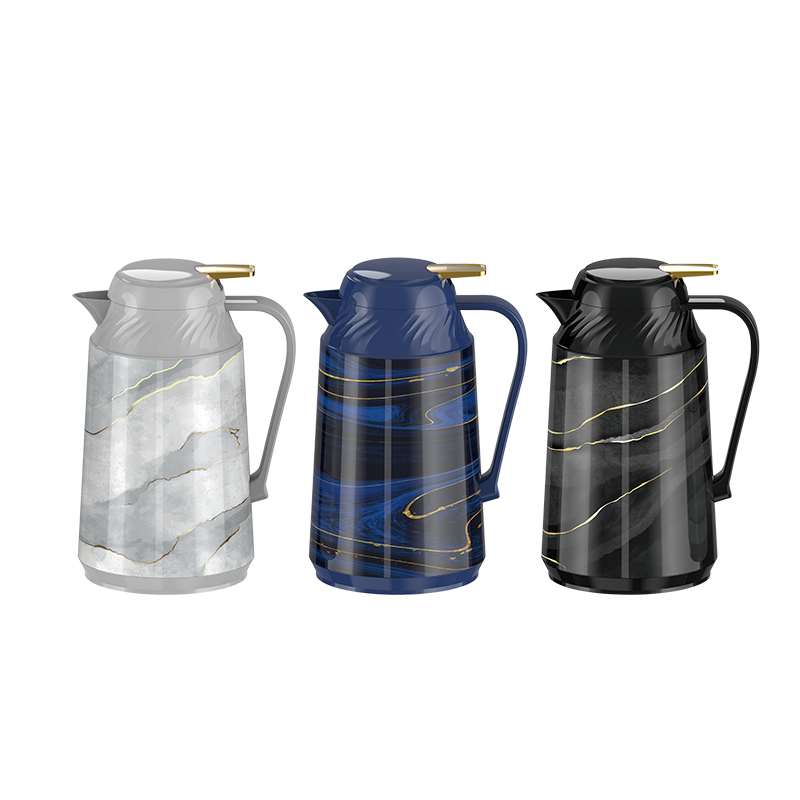
Before we wrap up, let’s shine a light on Zhejiang WeiLai Daily Necessities Co., Ltd. These folks, based in Yiwu – that buzzing hub of small commodities – have been in the game since 1996. They’ve grown into a powerhouse, cranking out iron body coffee pots alongside other goodies like thermos flasks and vacuum jugs.
What sets WeiLai apart? Their own R&D team pumps out new designs every couple of months, with over 100 patents under their belt. Brands like Sunlife and VELEY are theirs, exported to more than 100 countries. They’re big on customization too – think tailored colors, logos, and packaging. If you’re wholesaling, they handle OEM/ODM with a MOQ of around 3600 pieces, but they’re flexible for trials. Production’s speedy; they aim for 40 days on custom orders and have stock ready to ship in a week. Plus, their focus on quality? Spot on, with food-grade materials and rigorous testing.
If you’re sourcing iron body coffee pots, WeiLai’s worth a look. They’ve got the experience and the tech to deliver.
Conclusion
So, wrapping this up, yes – there are plenty of innovations and new technologies shaking up the design of iron body coffee pots. From better materials that last longer to smart features that make daily use a breeze, these pots are far from outdated. They’re adapting to our needs, whether that’s longer heat retention or custom looks. If you’re in the market, keep an eye on these trends; they could make your coffee routine smoother and more enjoyable. After all, a good pot isn’t just about holding liquid – it’s about enhancing that ritual we all love.
FAQs
What are the latest innovations in the design of iron body coffee pots?
Recent innovations include anti-drip spouts for mess-free pouring, ergonomic handles with heat-resistant grips, and vacuum-sealed glass liners that hold heat for up to 12 hours. Some even have built-in thermometers to check temperature without opening the lid.
How do new technologies improve the insulation in iron body coffee pots?
New tech like multi-layer reflective coatings on the inner liner bounces heat back in, extending warmth. Alloyed iron bodies resist corrosion better, and tempered glass liners are tougher against breaks, making the whole pot more reliable over time.
Are there eco-friendly advancements in iron body coffee pot design?
Absolutely. Manufacturers are using recycled iron and water-based coatings to cut down on environmental impact. Modular designs let you replace parts like liners, reducing waste, and energy-efficient production methods lower emissions during manufacturing.
Can I customize an iron body coffee pot with modern design features?
Yes, many suppliers offer customization like color matching, logo etching, and pattern designs. With innovations in powder coating and laser tech, these custom touches are durable and precise, perfect for branding or personal use.
What’s the future of innovations in iron body coffee pot technology?
Looking ahead, we might see smarter integrations like app-connected temp monitors or even self-heating elements. But for now, the focus is on sustainability and user-friendly tweaks – think lighter weights and better pour control to keep things practical.

